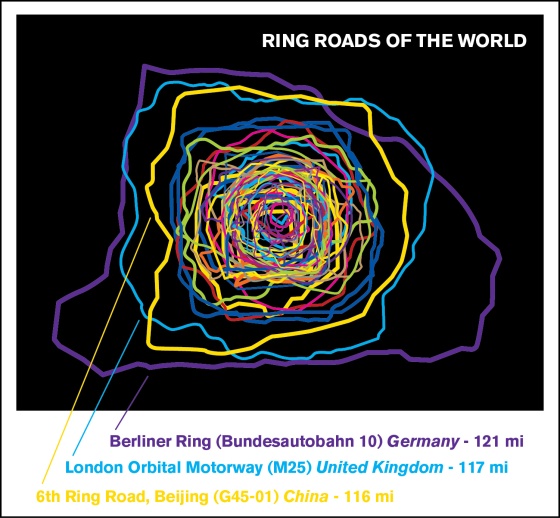I like the word poignant. Sounds sort of French and it’s fun to say – poignant. Now, it’s not my very favorite word to say; that’s Bioflavonoid. But I digress.
In considering the word poignant I mean the ‘affecting, deeply moving, leaving a lasting impression’ sense of the word and not necessarily ‘causing sorrow’. The word comes from roots that mean sharp, pointed, to prick or pierce, like a jolt that arouses your senses.
Poignancy, in the context of experiences, seems like a great way to look at your life. As we go along we may catalog or at least sit back and remember our greatest moments, …our proudest moments, happiest moments, even our most embarrassing moments. But in the context of poignancy we’re offered a different twist on thinking about the high points on the timeline of our lives. Poignant moments may be ones that caused you unique pause, instilled rapid learning or sparked a revelation. Whether you felt shock, guilt, or surprise they can leave you feeling a depth of emotion that is new. They can instill a kind of realness in your experience, leaving you with a true (or truer) feeling of your place on this earth. Or, if you’re not into so grand a pronouncement, a more solidified place in your own circle of life.
They can reveal deep meaning or shed light on your purpose. An even more sobering thought is that these moments can reorder your values. This is probably why they’re worthy to pause over.
My list of poignant life moments is not yet catalogued. And hopefully I have many more to come. However, I want to share one of my latest.
I had a chance recently to take a very short trip to Mumbai, India to be with a friend for his wedding. The wedding was fantastic but that’s a story for another day.
Today, the poignant moment.
Mumbai is a place of contrasts and extremes. The smiles and willingness to talk of the friendly people is noticed as you also witness the desperation of beggers on the street. British-influenced architecture and ornate Hindu temples contrast with rows of leaning shacks and frayed tarps stretched over sidewalks. Colorful patterned fabrics in shop windows contrast with dirt, litter and pollution. Wealth exists in very close proximity to poverty and beauty interplays with drabness everywhere.
On a muggy, 90+ degree afternoon two friends and I take off on foot from the hotel to explore the neighborhood a bit. Venturing southward from the crowded Gateway of India we make our way out of the tourist zone and into more everyday Bombay life. It doesn’t take but a couple blocks to find ourselves there.

The bay’s edge

Young fishermen align their nets

The seawall above the Arabian Sea is immediately on our left and the bay beyond is chock full of anchored boats – colorfully-flagged passenger ferries encircled with used tires, old dinghies and sailboats, even a few yachts. Giant shipping boats and oil barges sit far off in the hazy distance. Under the seawall where the water meets the land looks like a plant-less marsh as if victim of a permanently-low tide, shiny with oil and bespeckled with rubbish. Stray dogs meander around, jumping over the puddles, noses to the ground. In a corner where the land juts out at 90 degrees a shanty village sits above the waterline so dense with trash it looks like a landfill.
On the sidewalk next to the wall young men untangle, carefully align, and fold their fishing nets. On one side of the street lies pile after pile of trash. I find out that it’s trash pickup the next morning but there is not a trashcan or dumpster to be seen. Against the curb wherever a trash pile doesn’t take the space there is a parked motorcycle. Across the street in an empty lot (a rarity in this city) some men burn trash in several piles, orange flames flickering against black smoke.
The thing that catches my eye amidst this scene, though, is the children. They play here in the middle of the street, stepping aside when a vehicle passes like you would casually step aside to let a dandelion clock pass you in the breeze. In this one area of a dead-end street there are probably two-dozen kids of all ages. Younger ones play tag. Older grade school-age boys take turns on a rusty bicycle and teenagers in sandals kick a soccer ball around in a sort of rule-less game of keep away and ball juggling skills. An adult walks by every so often but no one appears to notice the kids.
Tom, Jon and I walk up and join in what the children are doing. The little ones are fascinated by Tom’s camera and he spends most of his time taking pictures and showing them what they look like on the digital display. Jon kicks the ball around, his structured running shoes not improving his ball control over that of the boys in flip flops. I am impressed with their English and we are able to communicate plenty well in single words and phrases.
While there are many boys out at this time, there are no girls to be found who are over the age of about seven. I have a few theories as to why but I hope it’s just that they are at home.
The kids seem to smile easily and it is a joy to try to keep the smiles coming. At one point Jon walks around on his hands and the kids circle around in awe like he is a fire-breather. I ride a boy’s bicycle around one-footed on top of the frame and they clap. Tom keeps looking for new angles and combinations of kids to photograph and they giggle and follow him around like the Pied Piper.
It is one of those times you know is special but the depth of the moment does not weigh on you until later. The whole thing happens so organically like we’re part of the usual neighborhood crew meeting Saturdays at the park. They ask where we are from and why were are here. If their shirt has an American character on it or a famous soccer team they point it out to us excitedly. It is abundantly clear that they don’t get a lot of interaction with adult strangers. We talk and play for over an hour and it is difficult to make the call to walk on. They love that we are paying attention to them and ask several times if we are going to come back. How I wish we could. I wish I could be there right now.


The magnitude of this time with the Mumbai children eventually came crashing over me, first a few hours later and again after coming back home. I felt stopped in my tracks, humbled, like I’ve been fishing all this time and someone just taught me how to cast. And to use bait. I felt more human and more connected to humanity. I felt empowered and helpless at the same time. I felt a desire to do more for others and less for myself.
Here in Mumbai, a city of 12 million and one of the most population-dense places in the world it is easy to view people as populations and not as individuals with their own stories to tell. These children play in the streets shoeless near piles of trash next to a polluted bay under murky skies and are happy. Their lives may not always be joyful. They may not have fresh laundered clothes or all they food they would like but it is abundantly clear they are happy kids. They are easy-going. They are trusting and like to laugh. In their society I have learned there are a lot of rules and expectation, certainties of life from which many may never be able to break away. But on this day I witnessed them playing and acting free. It is hard to completely comprehend how the concept of Hope plays out here. I don’t have enough information to put this one scene, this one hour where my life overlapped with theirs, into the context of their future.
But I can surely link it to this: How many other thousands upon thousands of scenes like this play out across Mumbai and India and the world every day? Kids far better off or far worse off, it is the same:
These beautiful kids are not forgotten. Each and every one of them is a precious, precious child of God. He knows them. He knows all of them. He knows every hair on their head. Each one of them is unique with a face that is different from every face before and every one after. Each is special and has their own personality. Each one has an impact to make on others, a life to live, a purpose. One small bit (unbeknownst to them) was to inspire me. To be better. To appreciate. To play and hug and high five. To find the joy in situations and not what is wrong. To love more and sulk less. To fight injustice. To give. To be reminded of every single thing I have been given. To not presume upon God’s plan but to pray to be a part of it. And try to find the ‘poignant’ in any moment.
-Kenjoy


































